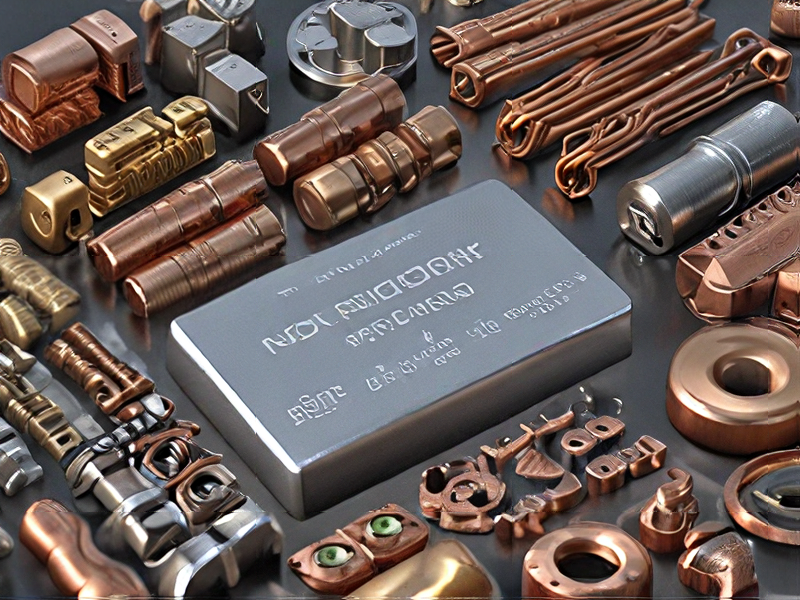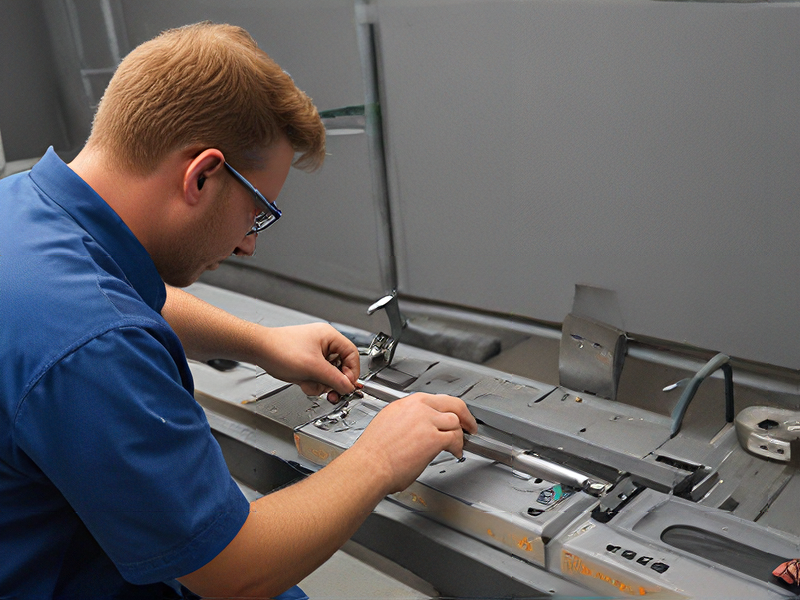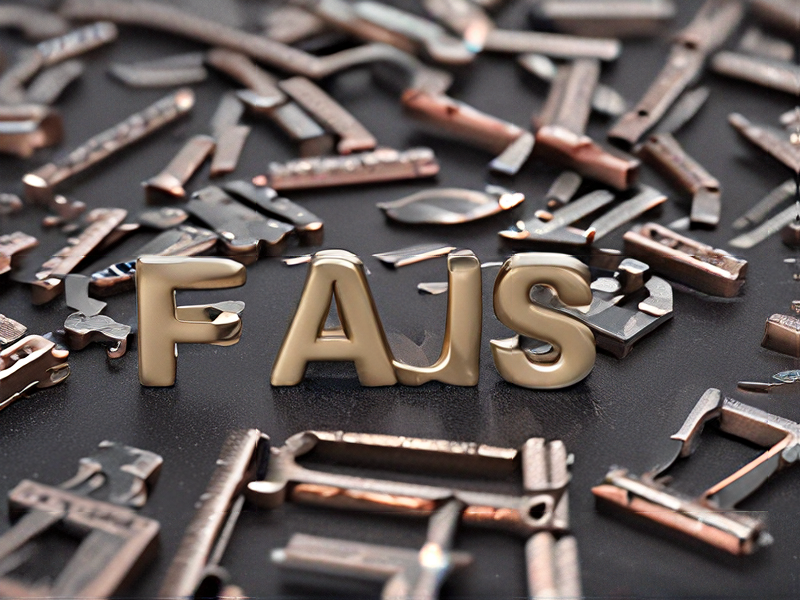Technology and Applications of non ferrous metals
Non-ferrous metals, which do not contain iron, include aluminum, copper, lead, zinc, and precious metals like gold and silver. These metals are prized for their distinct properties such as low weight, high conductivity, non-magnetic characteristics, and resistance to corrosion.
Aluminum: Lightweight and strong, aluminum is widely used in the aerospace and automotive industries. It is also prevalent in packaging (foil, cans), construction (windows, doors), and consumer electronics due to its excellent conductivity and malleability.
Copper: Known for its high electrical and thermal conductivity, copper is essential in electrical wiring, motors, and plumbing. Its antimicrobial properties make it valuable in medical and sanitary applications. Additionally, copper alloys like brass and bronze are used in machinery and musical instruments.
Lead: Despite its toxicity, lead is used in batteries (especially in vehicles), radiation shielding, and as an additive in certain types of glass and ceramics. Its high density and malleability make it useful in various industrial applications.
Zinc: Often used for galvanizing steel to prevent rust, zinc is also a component in die-casting alloys and is used in the production of brass. Its oxide is used in rubber manufacturing and in the pharmaceutical and cosmetic industries.
Precious Metals (Gold and Silver): Gold is primarily used in jewelry, electronics (due to its excellent conductivity and resistance to tarnish), and as an investment. Silver, with the highest electrical conductivity of any metal, is used in electronics, solar panels, and various alloys. Its antimicrobial properties also find applications in medical devices and clothing.
Applications: Non-ferrous metals are integral to various sectors due to their unique properties. They play critical roles in renewable energy (solar panels, wind turbines), transportation (lighter and more fuel-efficient vehicles), telecommunications, and medical technologies.
In summary, non-ferrous metals are vital to modern technology and industry, offering solutions where ferrous metals may not be suitable due to weight, conductivity, or corrosion resistance.

Quality Testing Methods for non ferrous metals and how to control quality
Quality testing for non-ferrous metals involves a variety of methods to ensure they meet specific standards.
Common Tests:
* Chemical Analysis: Determines the elemental composition using techniques like X-ray fluorescence (XRF) or atomic absorption spectroscopy (AAS). This verifies alloy composition and identifies impurities.
* Mechanical Testing: Evaluates properties like tensile strength, hardness, and ductility through standardized tests.
* Microstructure Analysis: Examines the metal’s internal structure under a microscope to assess grain size, phase distribution, and defects.
* Physical Testing: Measures properties like density, conductivity, and thermal expansion.
* Non-Destructive Testing (NDT): Techniques like ultrasonic testing, eddy current testing, or radiography detect internal flaws or discontinuities without damaging the metal.
Quality Control:
* Supplier Qualification: Selecting reliable suppliers with proven quality control programs.
* Incoming Inspection: Testing incoming materials to ensure they meet specifications.
* Process Control: Implementing measures during manufacturing to maintain consistent quality, including process monitoring and adjustments.
* In-Process Inspection: Conducting tests at various stages of production to identify potential issues.
* Final Inspection: Thoroughly inspecting finished products before shipment.
* Documentation and Record Keeping: Maintaining detailed records of all tests and inspection results.
By implementing a comprehensive quality testing and control program, manufacturers can ensure the reliability and performance of non-ferrous metal products.

Tips for Procurement and Considerations when Purchasing from non ferrous metals
Purchasing non-ferrous metals requires careful consideration to ensure quality, cost-effectiveness, and timely delivery. Here are some tips:
Procurement:
* Define Specifications: Clearly outline the required metal type (e.g., aluminum, copper, brass), alloy composition, size, shape, and required certifications.
* Source Reliable Suppliers: Research and select reputable suppliers with experience in the specific metals you need. Check their certifications, production capabilities, and customer references.
* Request Quotations: Obtain detailed quotes from multiple suppliers, comparing prices, lead times, and payment terms.
Considerations:
* Metal Type and Properties: Understand the specific properties of each non-ferrous metal and choose the best material for your application based on factors like corrosion resistance, strength, and ductility.
* Quality Assurance: Verify the metal’s quality through certifications (e.g., ASTM, ISO) and conduct inspections upon delivery.
* Market Fluctuations: Non-ferrous metal prices can be volatile. Consider hedging strategies or long-term contracts to manage price risk.
* Ethical Sourcing: Ensure your supplier adheres to ethical labor practices and environmental regulations.
* Logistics and Transportation: Factor in transportation costs and ensure the supplier can deliver the metals safely and on time.
By carefully considering these factors, you can make informed purchasing decisions and obtain high-quality non-ferrous metals for your needs.

FAQs on Sourcing and Manufacturing from non ferrous metals in China
FAQs on Sourcing and Manufacturing from Non-Ferrous Metals in China
1. Why source non-ferrous metals from China?
China is a global leader in the production and supply of non-ferrous metals such as aluminum, copper, and zinc. Competitive pricing, vast resources, and extensive manufacturing capabilities make China an attractive sourcing destination.
2. What are the main non-ferrous metals produced in China?
China is a major producer of aluminum, copper, zinc, lead, nickel, and tin. These metals are essential in various industries including automotive, construction, and electronics.
3. How do I find reliable suppliers in China?
Use platforms like Alibaba, Made-in-China, and Global Sources. Verify suppliers through reviews, certifications (ISO, RoHS), and third-party audits. Attending trade shows and working with sourcing agents can also help.
4. What are the quality standards for non-ferrous metals in China?
Chinese manufacturers adhere to international standards like ASTM, ISO, and DIN. Ensure your supplier complies with these standards and request material certifications and quality control documentation.
5. What are the challenges of sourcing from China?
Challenges include language barriers, quality control, intellectual property protection, and navigating complex regulations. Working with a local agent or firm can mitigate these risks.
6. How can I ensure product quality?
Conduct factory audits, request samples, and employ third-party inspection services. Establish clear quality standards and communicate them explicitly with your supplier.
7. What is the typical lead time for manufacturing?
Lead times vary based on the metal and product complexity. Typically, it ranges from 30 to 90 days. Custom products may take longer.
8. How do tariffs and trade policies affect sourcing?
Tariffs and trade policies fluctuate, affecting costs and logistics. Stay informed about current regulations and consider consulting trade experts to navigate these complexities.
9. What are the payment terms?
Common payment terms include 30% deposit with 70% balance upon shipment (T/T), Letters of Credit (L/C), and escrow services. Negotiate terms that protect your interests.
10. How do I handle shipping and logistics?
Work with experienced freight forwarders and understand Incoterms (FOB, CIF). Ensure proper packaging and documentation to avoid customs issues and delays.
Sourcing non-ferrous metals from China can be highly beneficial with the right strategies and precautions in place.

